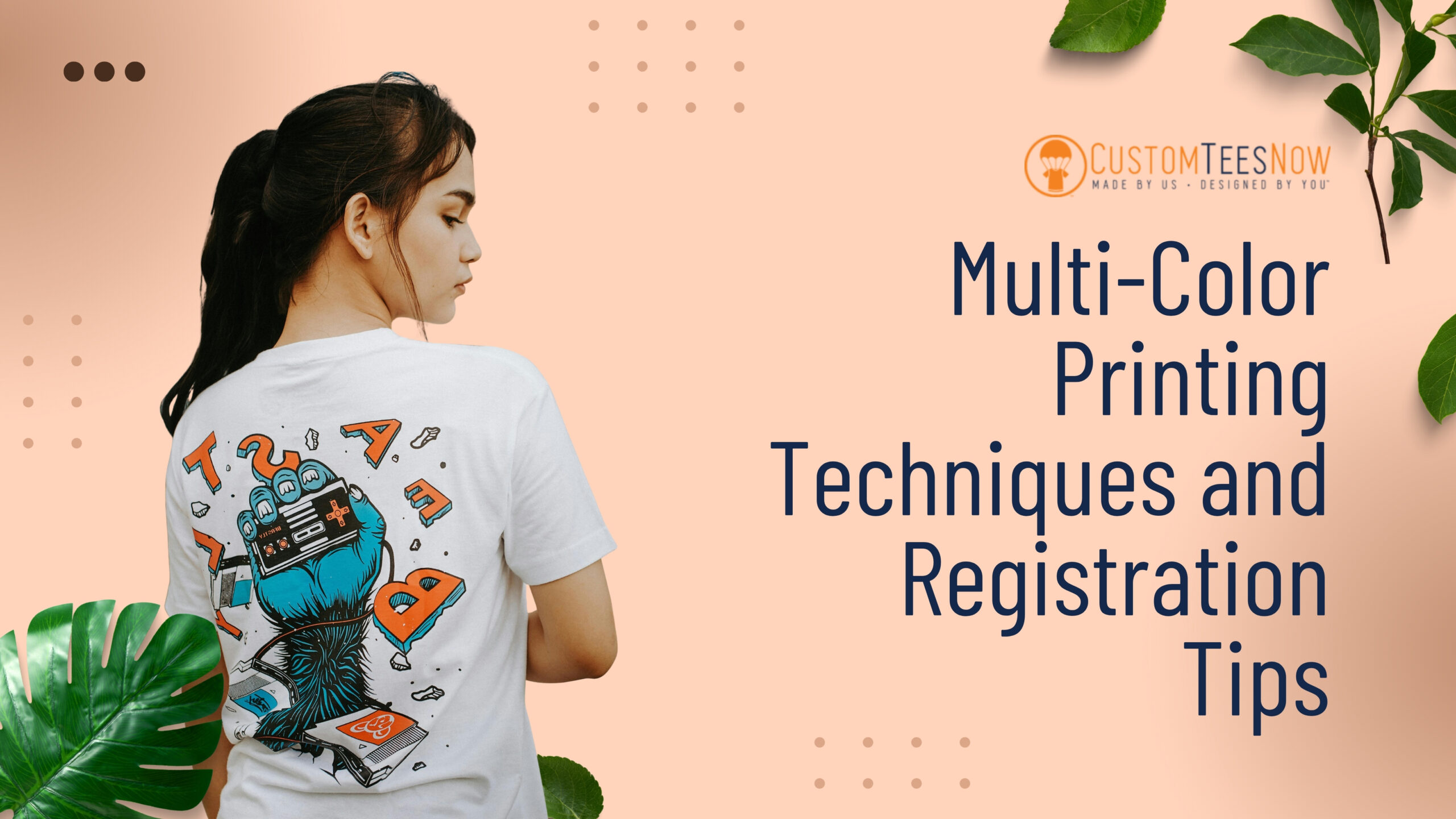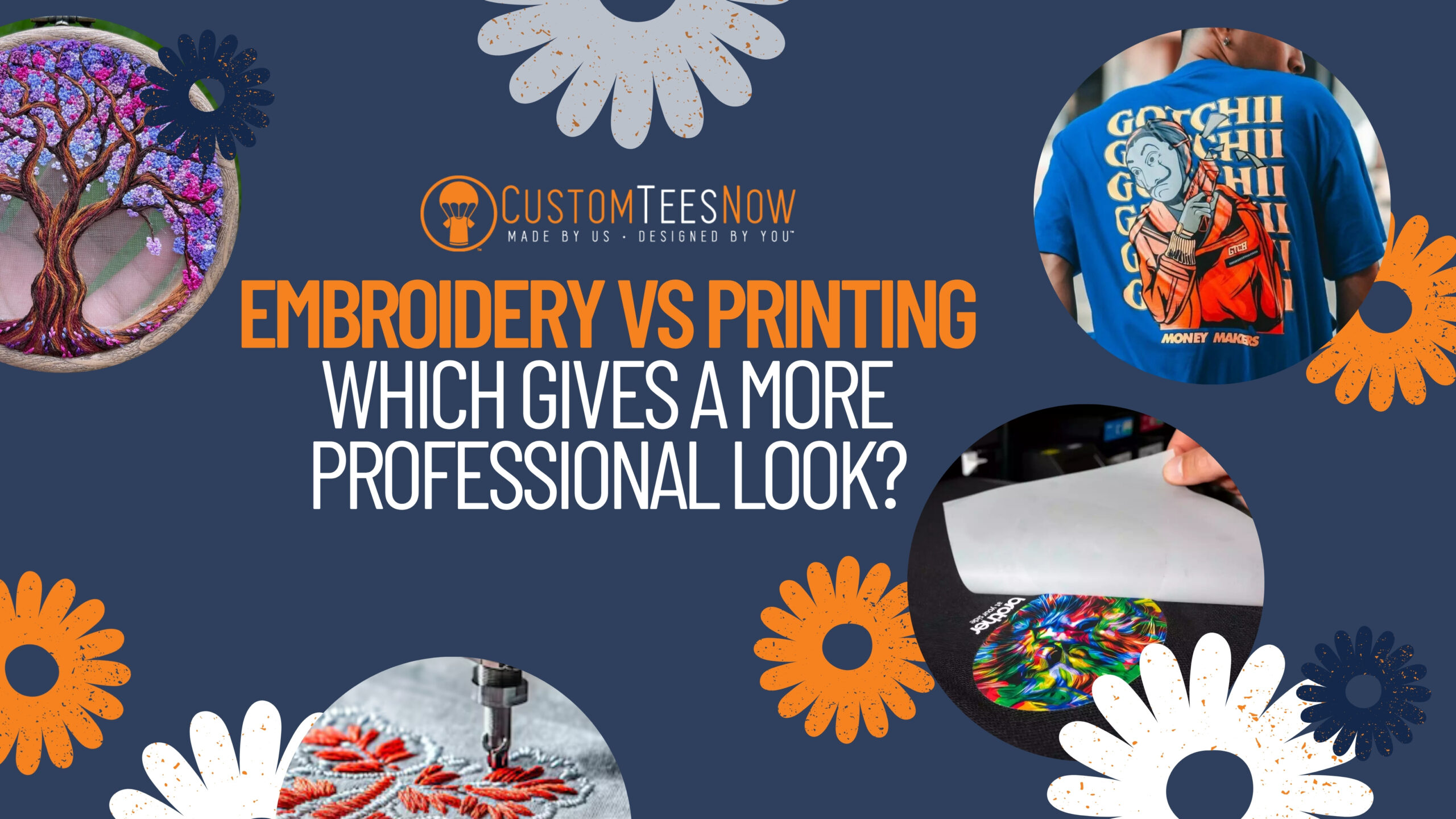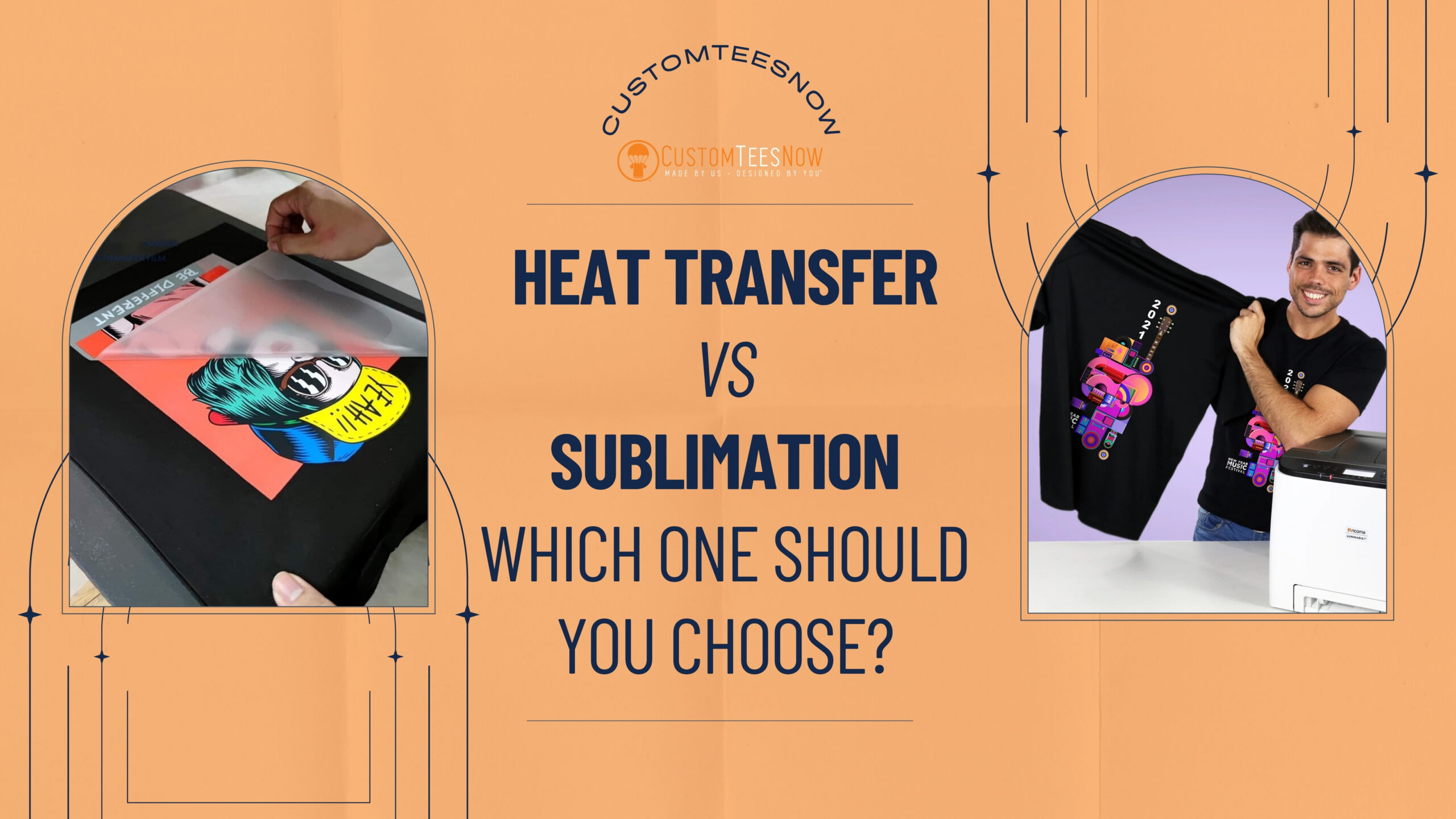
- July 20, 2025
What’s Cheaper: Embroidery, Sublimation, or Screen Printing? A Complete Cost Analysis
If you’re ordering custom apparel, promotional items, or branded merchandise, you’ve probably asked yourself: “What’s the most cost-effective printing method?” This question is crucial for small businesses, marketing teams, and event planners trying to maximize their budget. The answer isn’t always simple, as embroidery, sublimation, and screen printing each have unique cost structures and work best in different situations. This guide will break down the real costs of each method, helping you make an informed decision based on your specific needs.
Understanding the Three Printing Methods
What is Embroidery Printing? Embroidery involves stitching your design directly onto fabric using thread. It creates a textured, high-quality, professional look. Think of logos on polo shirts, hats, or jackets. Embroidery is durable and long-lasting, making it popular for uniforms and premium apparel.
What is Sublimation Printing? Sublimation transfers dye directly into the fabric using heat. The design becomes part of the material itself. This method is perfect for all-over prints, vibrant colors, and synthetic fabrics like polyester. You’ll see it on sportswear, mousepads, and items needing full-color designs.
What is Screen Printing? Screen printing pushes ink through a mesh screen onto the fabric. Each color requires a separate screen. It’s the classic method for t-shirts, especially with simple designs and limited colors. Screen printing is known for its durability and bold colors on cotton.
Quick Overview: Pros and Cons of Each Method
- Embroidery:
- Pros: Very durable, professional look, great for logos.
- Cons: Limited to thread colors, less detail, higher setup costs for small orders.
- Sublimation:
- Pros: Unlimited colors, all-over prints, no cracking/peeling, soft feel.
- Cons: Best on polyester/light colors, not ideal for dark fabrics, can be pricier for small runs.
- Screen Printing:
- Pros: Cost-effective for medium/large runs, durable, works well on cotton.
- Cons: Setup costs per color, less detail with many colors, not ideal for photos/all-over prints.
Why Cost Comparison Matters
Choosing the wrong method can blow your budget. Setup fees, per-item costs, quantity requirements, and design complexity dramatically impact the final price. A method cheap for 100 shirts might be expensive for just 10. Understanding these factors ensures you get the best value without sacrificing quality.
For small quantities (1-24 items), embroidery is often most cost-effective. For medium runs (25-100), screen printing typically offers the best value. For large volumes (100+), screen printing is usually the cheapest option. Sublimation works best for all-over designs on polyester materials. Consider setup fees, design complexity, and durability needs when making your final decision.
Breaking Down the Cost Factors
To understand what’s truly cheaper, we need to look at all the pieces of the cost puzzle. It’s not just about the price per shirt!
Initial Setup Costs This is often the biggest surprise for first-time buyers. Screen printing requires creating physical screens for each color in your design – this setup can cost $20-$50 per screen. Embroidery needs a “digitization” process to convert your logo into stitch instructions, typically $50-$150. Sublimation has minimal setup, often just a one-time fee for preparing the digital file ($10-$30), making it great for small orders.
Per-Unit Costs Once setup is done, the cost per item varies:
- Screen Printing: Costs decrease significantly as quantity increases. The first shirt might cost $8-$15, but the 100th might be $3-$5.
- Embroidery: More consistent per-item cost. A simple logo might be $5-$10 per item, regardless of order size (after setup).
- Sublimation: Relatively consistent per-item cost, often $6-$12, but doesn’t decrease as dramatically with volume as screen printing.
Material Costs
- Screen Printing: Ink costs are low, but special inks (like white underbase for dark shirts) add cost.
- Embroidery: Thread costs are minimal, but backing materials add a small amount.
- Sublimation: Requires specific polyester or polymer-coated items. Dye-sublimation paper and ink are factors, but costs are generally included in the per-item price.
Labor and Production Time
- Screen Printing: Setup is time-consuming (creating screens), but printing itself is fast once running.
- Embroidery: Digitization takes time, and stitching each item is slower than printing.
- Sublimation: Relatively quick setup and printing process, especially for smaller orders.
Minimum Order Requirements
- Screen Printing: Often has minimums (e.g., 12-24 items) to justify setup costs.
- Embroidery: Usually has a minimum (e.g., 6-12 items).
- Sublimation: Frequently no minimum, perfect for single items or very small batches.
Cost Comparison by Quantity
Quantity is the most important factor in determining the cheapest method:
Small Batches (1-24 items)
- Cheapest: Embroidery or Sublimation. Screen printing setup costs make it expensive here. Embroidery has a high setup but then a reasonable per-item cost. Sublimation has minimal setup and a consistent per-item cost, often making it the winner for very small orders (1-5 items).
- Example: 10 shirts with a simple logo. Embroidery might cost $120 total ($50 setup + $7/item). Sublimation might be $110 total ($20 setup + $9/item). Screen printing could be $250+ ($150 setup + $10/item).
Medium Runs (25-100 items)
- Cheapest: Screen Printing. The setup costs get spread across more items, making the per-unit cost drop sharply. Embroidery setup is already covered, but its per-item cost stays higher. Sublimation per-item cost remains steady.
- Example: 50 shirts. Screen printing might cost $300 total ($150 setup + $3/item). Embroidery might be $450 ($50 setup + $8/item). Sublimation might be $470 ($20 setup + $9/item).
Large Volume (100+ items)
- Cheapest: Screen Printing. The setup costs become negligible per item. Embroidery and Sublimation per-item costs don’t decrease as much.
- Example: 200 shirts. Screen printing might cost $700 total ($150 setup + $2.75/item). Embroidery might be $1650 ($50 setup + $8/item). Sublimation might be $1820 ($20 setup + $9/item).
When Quantity Makes the Biggest Difference The savings from screen printing really kick in around 50 items and become massive above 100. If you know you’ll need more than 100 items, screen printing is almost always the winner. For one-off items or gifts, sublimation is hard to beat. For 10-30 items with a logo, embroidery often shines.
Cost Analysis by Product Type
The type of item you’re printing on significantly impacts the cost and suitability of each method:
T-Shirts and Apparel
- Cotton T-Shirts: Best for screen printing. Affordable, holds ink well.
- Polyester/Performance Wear: Best for sublimation. Ink becomes part of the fabric.
- Polo Shirts/Dress Shirts: Often embroidery for a professional look.
- Cost Note: Screen printing t-shirts are cheapest in bulk. Sublimation requires specific polyester shirts, which can cost more upfront.
Hats and Caps
- Structured Hats (Front Panels): Embroidery is dominant (durable, professional).
- Flexfit/Beanies: Can work with screen printing or sublimation.
- Cost Note: Embroidery setup is high, but per-hat cost is reasonable. Screen printing hats requires curved platen printing, adding cost.
Bags and Totes
- Cotton Canvas Totes: Excellent for screen printing.
- Polyester/Performance Bags: Great for sublimation (all-over prints).
- Cost Note: Screen printing totes are very cost-effective for events. Sublimation allows for full-color, seamless designs.
Home Goods and Decor
- Pillows, Blankets, Mugs: Sublimation is king (works on various materials).
- Cotton Tea Towels: Screen printing is cost-effective.
- Cost Note: Sublimation opens up many product possibilities beyond apparel. Screen printing is limited to fabric.
Corporate Apparel and Uniforms
- Polo Shirts/Outerwear: Often embroidery for a premium look.
- T-Shirts for Events: Often screen printing for bulk needs.
- Cost Note: Embroidery durability justifies cost for uniforms. Screen printing wins for large company t-shirt orders.
Hidden Costs and Considerations
Don’t just look at the sticker price! These factors affect true cost:
Durability and Longevity Factors
- Embroidery: Extremely durable. Thread can last years, even decades, with proper care. Resists fading and cracking.
- Screen Printing: Very durable on cotton. Ink can crack or fade slightly over many washes, but generally lasts years.
- Sublimation: Ink is in the fabric, so it won’t crack or peel. Durability on polyester is excellent, especially for sportswear.
Color Limitations and Complex Designs
- Embroidery: Limited by thread colors (usually 10-15). Fine details and gradients are difficult or impossible.
- Screen Printing: Each color adds cost (setup/screen). Complex multi-color designs get expensive quickly. Gradients require special techniques.
- Sublimation: Virtually unlimited colors and perfect for gradients/photos. No extra cost for complexity. But: Primarily works on white/light polyester or specially coated items.
Environmental Impact
- Embroidery: Minimal waste (mainly thread scraps). Thread is synthetic (polyester/rayon).
- Screen Printing: Water-based inks are more eco-friendly. Plastisol inks contain PVC. Screen cleaning uses water/chemicals.
- Sublimation: Dye-sublimation uses water-based dyes with minimal waste. No water discharge. Requires specific synthetic materials.
Shipping and Handling Costs
- Embroidery: Can add weight (thread), potentially increasing shipping slightly.
- Screen Printing: Ink adds minimal weight.
- Sublimation: Dye and paper are lightweight.
- Consider: Setup fees and longer production times (especially for complex orders) can delay delivery, potentially missing deadlines and incurring rush fees.
When to Choose Each Printing Method
Choose Embroidery When…
- You need a professional, premium look (logos on polos, hats).
- Durability is critical (uniforms, workwear).
- Your design has few colors and is not overly detailed.
- You’re ordering small to medium quantities (6-100 items).
- You’re printing on caps, jackets, or thicker fabrics.
Choose Sublimation When…
- You need full-color, all-over designs or photographs.
- Printing on polyester or performance fabrics.
- You want soft-to-the-touch prints with no cracking/peeling.
- You’re ordering very small quantities (1-24 items) or one-off items.
- You need to print on non-fabric items like mugs, mousepads, or phone cases.
Choose Screen Printing When…
- You’re ordering medium to large quantities (25+ items, especially 100+).
- Printing on cotton t-shirts.
- Your design has fewer colors (1-4 colors is ideal).
- Budget is the primary concern for bulk orders.
- You need vibrant, opaque colors on light backgrounds.
Making Your Decision: A Step-by-Step Guide
- Step 1: Assess Your Needs
- What item(s) are you printing on? (T-shirts, hats, bags?)
- What’s your design like? (Colors, detail, size?)
- How many do you need? (1 item or 1000?)
- How important is durability and premium feel?
- Step 2: Calculate Your Budget
- Include setup fees, per-item costs, shipping, and any rush fees.
- Remember: Cheapest per-item isn’t always cheapest overall.
- Step 3: Consider Quality Requirements
- Do you need a premium look (embroidery) or photo-quality (sublimation)?
- Is durability for workwear essential?
- Step 4: Evaluate Time Constraints
- Screen printing setup takes time but runs fast.
- Embroidery digitization and stitching take time.
- Sublimation is often fastest for small orders.
- Step 3: Request Quotes from Multiple Providers
- Get quotes using your exact design and quantity.
- Ask about setup fees, per-item costs, and turnaround time.
- Compare the total cost, not just the per-item price.
Conclusion: Finding the Right Balance
There’s no single “cheapest” method – it depends entirely on your specific needs! Screen printing dominates for bulk orders of cotton t-shirts. Embroidery offers the best value for small batches of polos, hats, and uniforms where a premium look matters. Sublimation is unbeatable for vibrant, all-over designs on polyester or small quantities.
By understanding the cost factors – setup fees, per-unit costs, quantity thresholds, and product suitability – you can confidently choose the method that gives you the best value for your budget and requirements.
(FAQ)
Is embroidery more expensive than screen printing?
Yes, embroidery generally has a higher per-item cost than screen printing for the same quantity. However, screen printing has significant setup fees per color. For very small orders (1-24 items), embroidery can be cheaper overall.
What’s the cheapest printing method for small orders?
For small orders (1-24 items), sublimation is often the cheapest due to minimal setup fees. Embroidery can also be cost-effective for small quantities of items like hats or polos where the setup cost is spread across fewer items.
Does sublimation cost more than screen printing?
For bulk orders (100+ items), screen printing is almost always cheaper. For small orders or all-over designs, sublimation can be more cost-effective than screen printing.
Are there any hidden costs I should be aware of?
Yes! Watch for: setup fees (screens, digitization), artwork preparation fees, shipping costs, rush order fees, and minimum order requirements. Always get a detailed quote.
Which method lasts longest?
Embroidery generally lasts the longest, often years or decades. Screen printing is very durable but can crack or fade slightly over many washes. Sublimation is extremely durable on polyester as the ink is part of the fabric.
Can I mix printing methods on the same order?
Yes, but it often increases complexity and cost. It might require multiple setups and vendors. Sometimes it’s more efficient to use one method for all items unless you have a specific reason to mix (e.g., embroidery on hats, screen printing on shirts).
Primary CTA: Ready to Get Custom Printing Quotes?
Now that you understand the costs, it’s time to get specific quotes! Click here to request quotes from our trusted printing partners and find the best deal for your custom apparel or merchandise needs.



